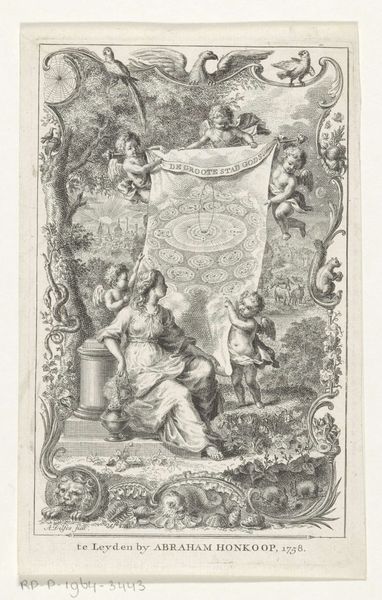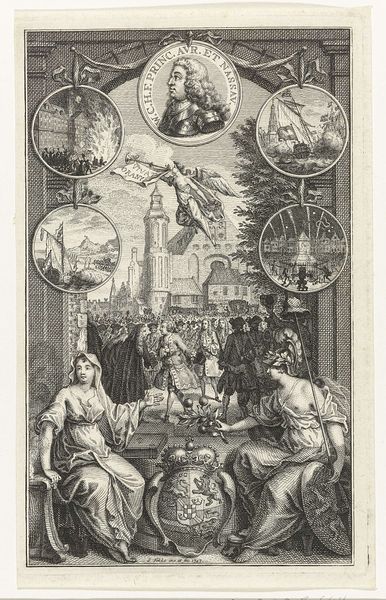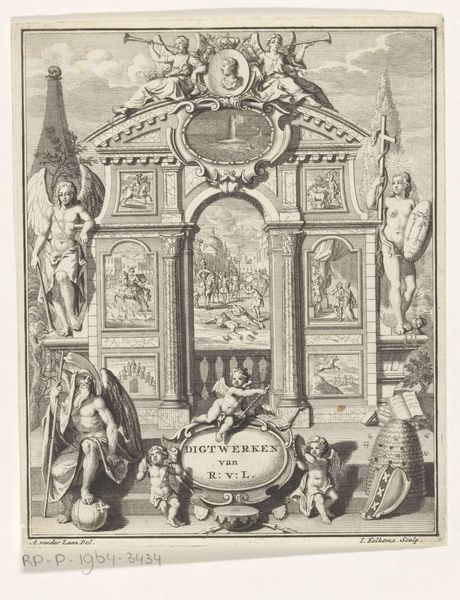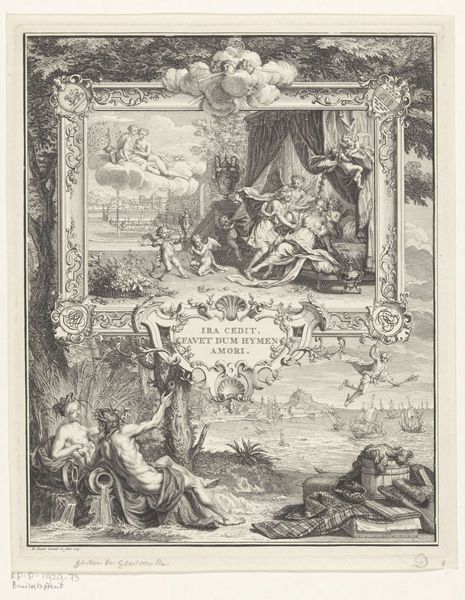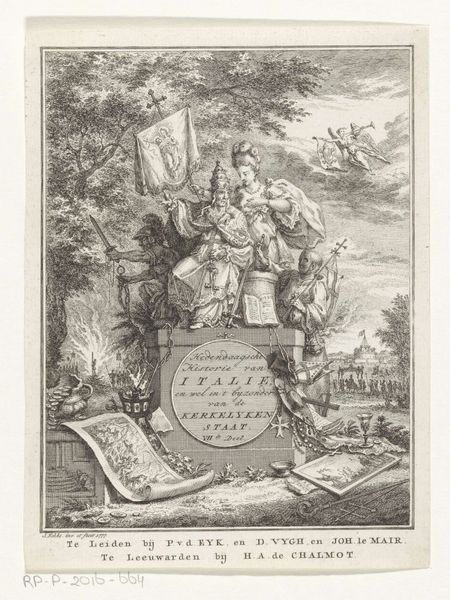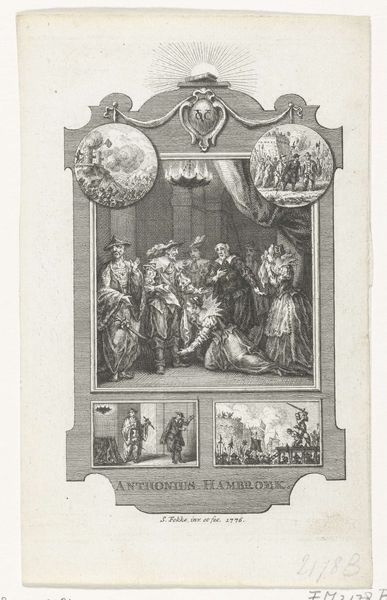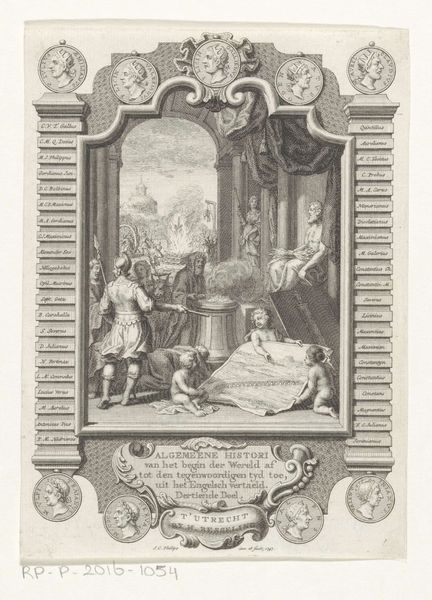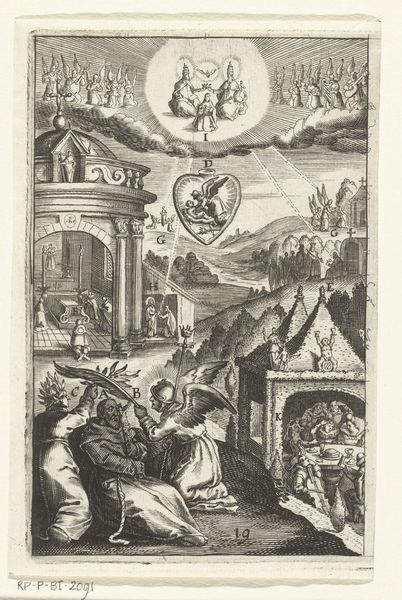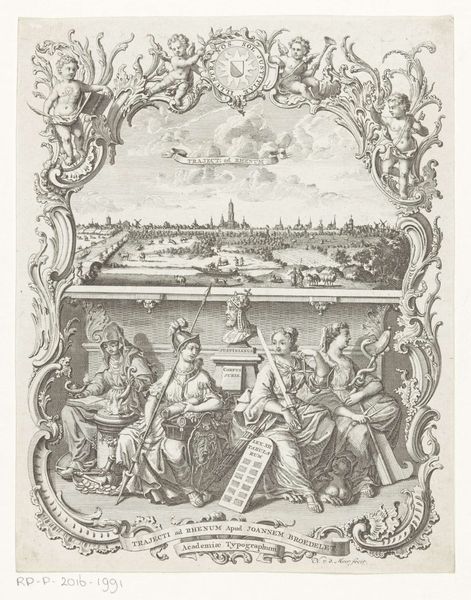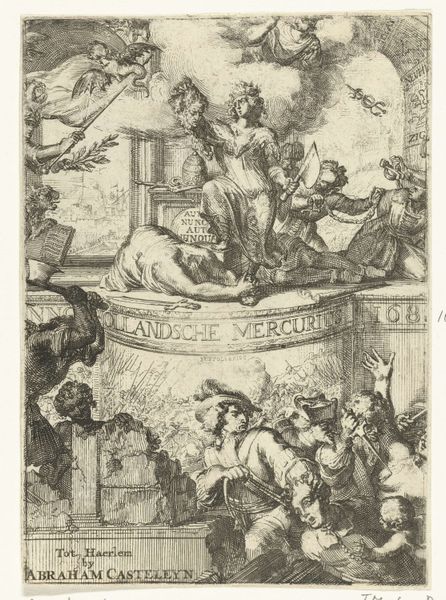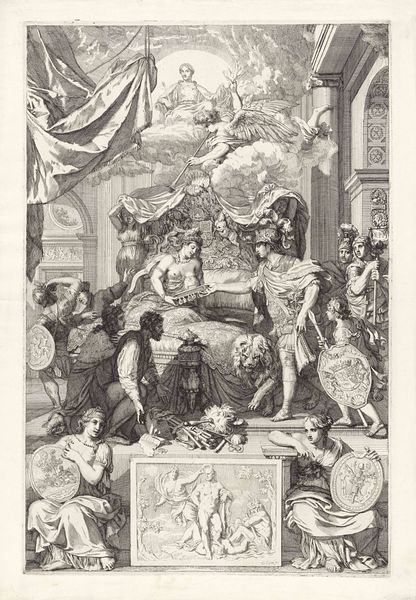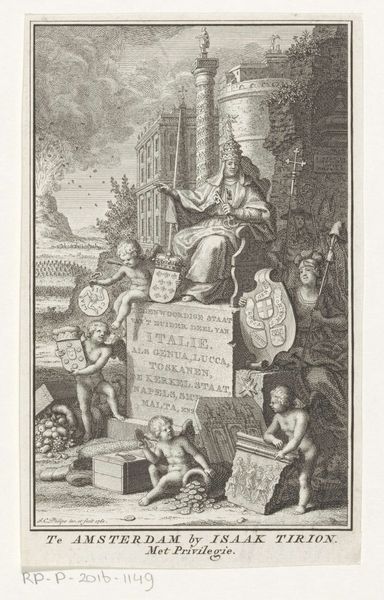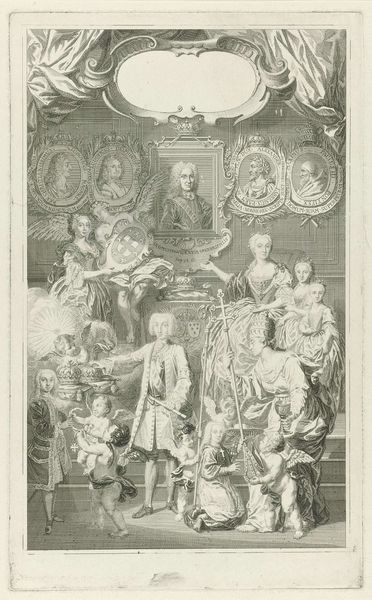
print, etching, engraving
#
portrait
#
allegory
#
baroque
#
dutch-golden-age
# print
#
etching
#
old engraving style
#
traditional media
#
pen-ink sketch
#
cityscape
#
history-painting
#
academic-art
#
engraving
Dimensions: height 179 mm, width 105 mm
Copyright: Rijks Museum: Open Domain
This allegory on Spain and Portugal was created in 1759 by Jan Caspar Philips as an engraving. The composition is rich with symbolic elements, densely packed into a vertical format. Structurally, the print is divided into distinct zones. At the top, heavy drapery suggests a stage, framing the scene below. A map of the Iberian Peninsula dominates the center, flanked by figures representing knowledge and abundance. Note how Philips uses contrasting textures, from the smooth skin of the cherubs to the rough, etched lines defining the architecture. This creates visual interest and depth. The map itself is a key signifier, a semiotic device indicating territorial power and geographical knowledge. But what does it mean to allegorize nations in this way? Philips invites us to consider the relationship between representation and reality, between the symbolic order and the material world. The controlled lines of the engraving both depict and, in a sense, attempt to define the boundaries of these countries. It's a fascinating interplay between art, cartography, and power.
Comments
No comments
Be the first to comment and join the conversation on the ultimate creative platform.
